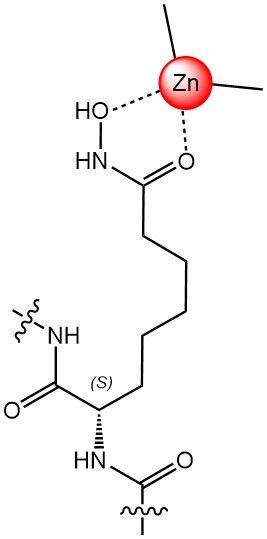Welcome to Iris Biotech
For better service please confirm your country and language we detected.

For better service please confirm your country and language we detected.

Thank you very much for your interest in our products. All prices listed on our website are ex-works, Germany, and may attract customs duties when imported.
You may/will be contacted by the shipping company for additional documentation that may be required by the US Customs for clearance.
We offer you the convenience of buying through a local partner, Peptide Solutions LLC who can import the shipment as well as prepay the customs duties and brokerage on your behalf and provide the convenience of a domestic sale.
Continue to Iris Biotech GmbHSend request to US distributorChemischer Name: N-alpha-(9-Fluorenylmethoxycarbonyl)-N-epsilon-(t-butoxycarbamoyl)-L-lysine // Synonyme: Fmoc-Lys(carbamoyl-OtBu)-OH, Fmoc-Cit(tBuO)-OH, N-alpha-(9-Fluorenylmethyloxycarbonyl)-N'-t-butoxy)-L-citrulline,N2-(((9H-fluoren-9-yl)methoxy)carbonyl)-N6-(t-butoxycarbamoyl)-L-lysine
Startet von 1.350,00 €
Histone deacetylases (HDACs), pivotal enzymes in the regulation of gene expression, can be efficiently inhibited by substrate peptidomimetic inhibitors (SPIs), as shown by Jamiesen et al. The inhibiting properties of SPIs stem from the presence of non-natural amino acids able to coordinate the HDAC active site zinc(II). Such amino acids with chelating properties can be obtained by the suitable placement of functional groups with donor properties within their side chain, such as amino, carbonyl, oxyamino or hydroxyl groups. The building blocks Fmoc-Asu(NH-OtBu)-OH (FAA8295), Fmoc-Lys(carbamoyl-OtBu)-OH (FAA8350), Fmoc-HomoArg(OtBu,Pbf)-OH (FAA8355) and Fmoc-L-Orn(Ac,OBz)-OH (FAA4220) are compatible with standard Fmoc/tBu SPPS protocols and represent ready to use efficient tools for the fine-tuning of the chelating properties of peptides.
Synthesis of HDAC Substrate Peptidomimetic Inhibitors Using Fmoc Amino Acids Incorporating Zinc-Binding Groups; A. Mahindra, C. J. Millard, I. Black, L. J. Archibald, J. W. R. Schwabe and A. G. Jamieson; Org Lett 2019; 21: 3178-3182. https://doi.org/10.1021/acs.orglett.9b00885
Probing the structure-activity relationship of endogenous histone deacetylase complexes with immobilized peptide-inhibitors; J. Sindlinger, J. Bierlmeier, L. C. Geiger, K. Kramer, I. Finkemeier and D. Schwarzer; J Pept Sci 2016; 22: 352-9. https://doi.org/10.1002/psc.2875
Interrogating Substrate Selectivity and Composition of Endogenous Histone Deacetylase Complexes with Chemical Probes; A. Dose, J. Sindlinger, J. Bierlmeier, A. Bakirbas, K. Schulze-Osthoff, S. Einsele-Scholz, M. Hartl, F. Essmann, I. Finkemeier and D. Schwarzer; Angew Chem Int Ed Engl 2016; 55: 1192-5. https://doi.org/10.1002/anie.201508174
Histone deacetylase (HDAC) 1 and 2 complexes regulate both histone acetylation and crotonylation in vivo; R. D. W. Kelly, A. Chandru, P. J. Watson, Y. Song, M. Blades, N. S. Robertson, A. G. Jamieson, J. W. R. Schwabe and S. M. Cowley; Scientific reports 2018; 8: 14690. https://doi.org/10.1038/s41598-018-32927-9
HDAC inhibitors: a 2013-2017 patent survey; M. Faria Freitas, M. Cuendet and P. Bertrand; Expert Opin Ther Pat 2018; 28: 1-17. https://doi.org/10.1080/13543776.2018.1459568
Fmoc protected (2s)-2-amino-8-[(1,1-dimethylethoxy)amino]-8-oxo-octanoic acid, (s)-2-amino-8-oxononanoic acid and (s)-2-amino-8-oxodecanoic acid for peptide synthesis; A. Jamieson, A. Mahindra, I. Black; 2019; WO2019219938A1.
Sie benötigen größere Mengen für Ihre Entwicklung oder Produktion?
Bitte senden Sie mir mehr Informationen über









